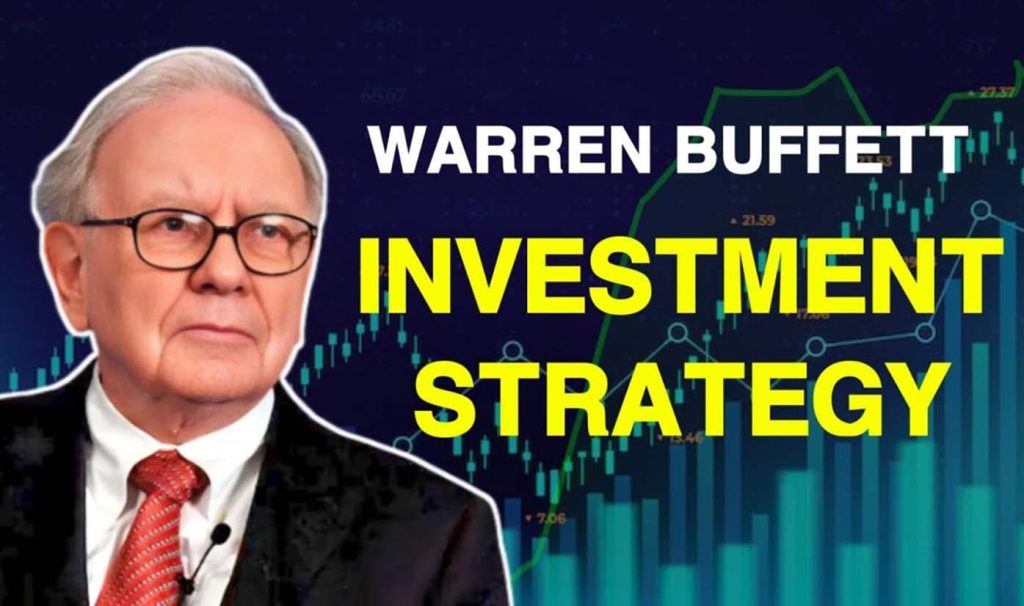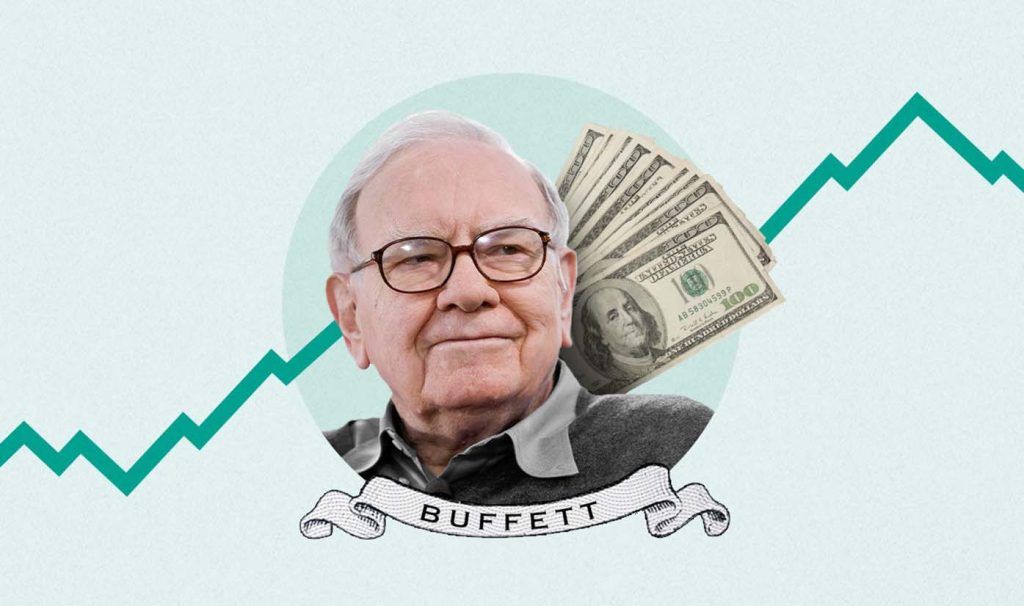When it comes to investing, few names carry the weight and authority of Warren Buffett. Known as the “Oracle of Omaha,” Buffett has become one of the most respected and successful investors of all time. His approach to investing has not only shaped the world of finance but also influenced countless investors worldwide. But what exactly are the strategies that have made him so successful? And, more importantly, how can you apply them to your own investment journey?
We’ll take a deep dive into Warren Buffett’s investment strategies, explore who should consider following his approach, and discuss the best investment products for implementing these principles.
The Core Principles of Warren Buffett’s Investment Strategies
Warren Buffett’s investment philosophy is built on a foundation of value investing, a strategy that involves purchasing assets that appear to be undervalued by the market but have strong potential for long-term growth. Here are the key principles that underpin his strategy:
1. Invest in What You Understand (Circle of Competence)
Buffett’s first rule of investing is that you should only invest in businesses or industries that you understand. He refers to this as staying within your “circle of competence.” While the stock market may seem like a vast ocean of opportunities, Buffett encourages investors to focus on businesses and industries where they have knowledge and expertise. The idea is simple—if you understand how a company works, its potential for growth, and the risks involved, you can make more informed and confident decisions.
For example, Buffett has always preferred investing in industries such as insurance, consumer goods, and banking because he understands the mechanics behind them. On the other hand, he avoids investing in sectors like technology, where he feels he lacks the necessary expertise, even though the sector offers significant growth potential.
2. Look for Companies with a Durable Competitive Advantage
One of Buffett’s most important rules is to look for businesses that have a sustainable competitive advantage, often referred to as a “moat.” A moat is the ability of a company to maintain its competitive edge over the long term. It could come in the form of strong brand recognition, proprietary technology, or regulatory advantages.
Companies with a moat are more likely to weather economic downturns and continue to generate profits over time. Buffett has famously invested in businesses like Coca-Cola and Apple, which possess strong brand identities and market dominance, making them relatively immune to competition.
3. Focus on Long-Term Value, Not Short-Term Gains
Buffett is a long-term investor at heart. He believes in buying quality companies and holding onto them indefinitely, allowing the compounding of earnings to generate wealth over time. His approach is the opposite of short-term trading, which relies on trying to time the market and take advantage of temporary price fluctuations.
For Buffett, the ideal investment is one that can be held for years, even decades. He famously stated, “Our favorite holding period is forever.” This long-term outlook allows Buffett to ride out short-term volatility in the market and benefit from the power of compound interest—a concept he refers to as “the eighth wonder of the world.”
4. Invest in Management You Trust
Buffett places a significant emphasis on the quality of management when evaluating potential investments. He believes that a company is only as good as the people running it. That’s why he looks for businesses with leadership teams that are honest, competent, and shareholder-focused. According to Buffett, management should act in the best interests of shareholders and be transparent in their dealings.
Buffett’s trust in management is evident in his investments in companies like Berkshire Hathaway, where the leadership is not only highly capable but also transparent and committed to the company’s long-term success.

5. The Margin of Safety
A cornerstone of Buffett’s investment approach is the concept of margin of safety. This principle involves buying stocks at a price lower than their intrinsic value to reduce the risk of losing money. Essentially, if you can purchase an asset at a significant discount to its true worth, you are building a cushion that protects you against market downturns.
Buffett’s margin of safety is informed by thorough fundamental analysis, including studying a company’s financials, competitive position, and future growth prospects. The more the stock is undervalued, the greater the margin of safety and the lower the risk of loss.
Who Should Follow Warren Buffett’s Strategy?
Warren Buffett’s investment philosophy is ideal for a specific group of investors—those who are looking for long-term wealth accumulation, who have patience, and who are comfortable with the idea of holding onto investments through market fluctuations. But not everyone is suited for his approach. Let’s break down who could benefit the most from his strategies:
1. Long-Term Investors
Buffett’s strategy is best suited for those who are patient and focused on the long haul. If you’re looking to make quick profits or engage in frequent trading, his approach may not be for you. Value investing requires patience, as it can take years for the market to recognize the true value of a company. However, if you’re willing to wait for the right opportunity and let your investments compound over time, Buffett’s strategy can help you achieve substantial returns.
2. Conservative Investors
If you’re a more conservative investor looking for stability and consistent returns, Buffett’s strategy is a good fit. By focusing on businesses with strong fundamentals and a durable competitive advantage, Buffett aims to reduce the risk of loss. His strategy isn’t about taking huge risks for short-term rewards but about steady, long-term growth. This approach is ideal for risk-averse investors who value capital preservation.
3. Value Seekers
Buffett’s strategy is designed for those who are comfortable with fundamental analysis and prefer investing in undervalued companies with long-term potential. If you enjoy analyzing financial statements, studying market trends, and looking for hidden gems, Buffett’s value investing approach will resonate with you.
4. Investors Who Trust in the Power of Compounding
If you believe in the power of compounding and want to let your investments grow over time, Buffett’s philosophy aligns perfectly with your goals. Compounding can turn even modest investments into substantial sums, provided that you have the discipline to stay invested over the long term.
How to Apply Warren Buffett’s Strategy: Choosing the Right Investment Products
Now that you understand Buffett’s core investment principles and know who should follow his strategy, let’s dive into the kinds of investment products that align with his approach. These products are suitable for value-oriented investors who want to follow Buffett’s philosophy:
1. Individual Stocks
Buffett’s preferred investment vehicle is buying individual stocks of companies with strong fundamentals and a competitive advantage. Look for companies with a low P/E ratio, solid cash flow, and a history of consistent growth. Focus on sectors you understand, and pay attention to management quality. Companies like Coca-Cola, Apple, and American Express are prime examples of Buffett’s approach.
2. Exchange-Traded Funds (ETFs)
For those who want to diversify their portfolios but still focus on value investing, ETFs that track value stocks are an excellent option. Many ETFs specifically target undervalued companies, providing exposure to a broad range of assets while maintaining the focus on quality and long-term growth.
3. Mutual Funds
Many mutual funds are designed to follow a value investing strategy. Look for funds that emphasize buying undervalued stocks with strong fundamentals. Companies like Vanguard and Fidelity offer value-focused funds that align well with Buffett’s principles.
4. Real Estate Investment Trusts (REITs)
Buffett has invested in real estate through his company Berkshire Hathaway. If you’re looking to diversify beyond stocks, consider investing in REITs that focus on undervalued properties or those with strong potential for future appreciation.

Applying Buffett’s Strategy to Your Portfolio
Warren Buffett’s investment strategies are simple in theory but require patience, discipline, and a focus on long-term goals. By adhering to principles like value investing, fundamental analysis, and a long-term outlook, you can follow in the footsteps of one of the greatest investors of all time.
For those willing to put in the effort, Buffett’s approach offers a way to build lasting wealth through carefully selected investments. So, take the time to understand the fundamentals, diversify your portfolio, and focus on buying companies with a sustainable competitive advantage. Whether you’re just starting or looking to refine your approach, Buffett’s principles can guide you toward success. Happy investing!
